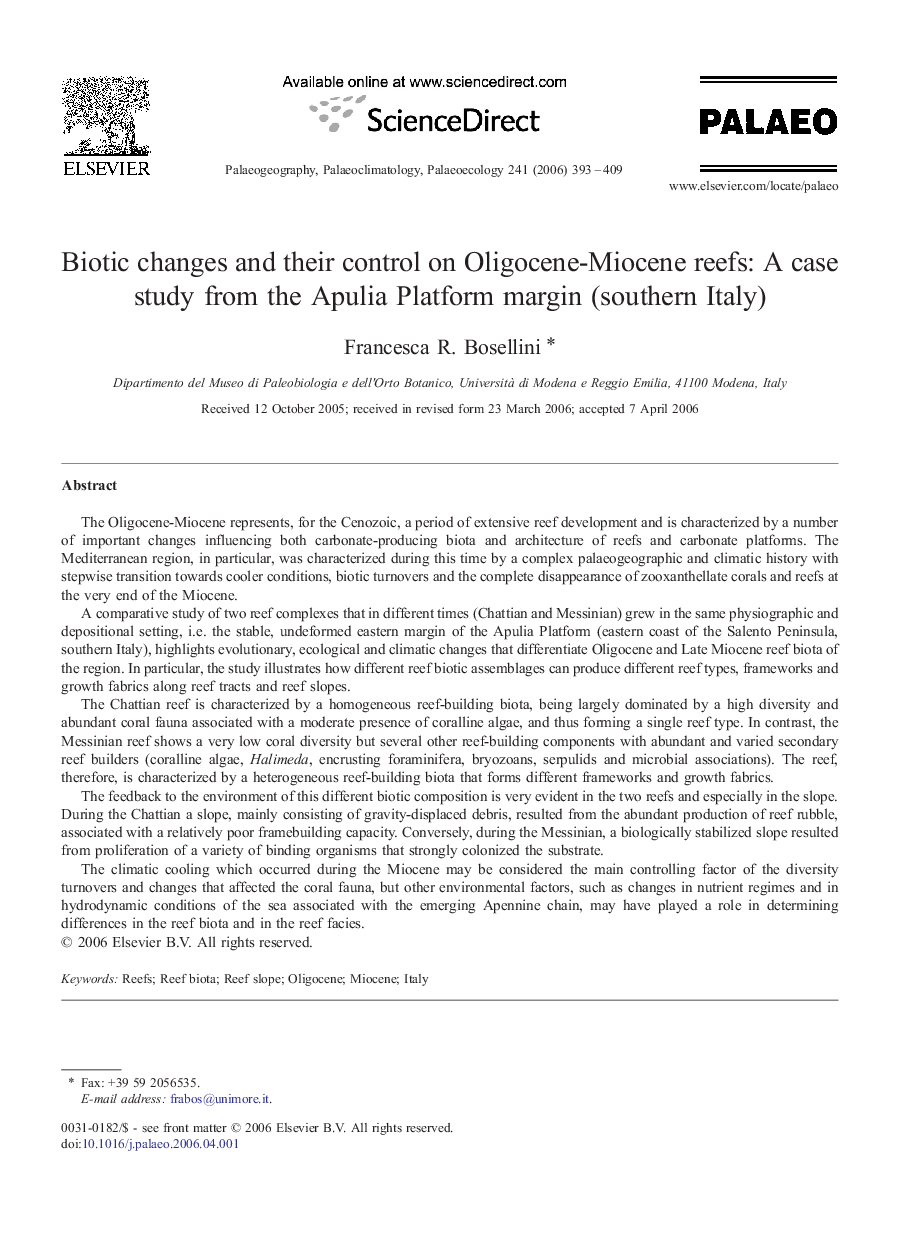| کد مقاله | کد نشریه | سال انتشار | مقاله انگلیسی | نسخه تمام متن |
|---|---|---|---|---|
| 4469201 | 1622364 | 2006 | 17 صفحه PDF | دانلود رایگان |

The Oligocene-Miocene represents, for the Cenozoic, a period of extensive reef development and is characterized by a number of important changes influencing both carbonate-producing biota and architecture of reefs and carbonate platforms. The Mediterranean region, in particular, was characterized during this time by a complex palaeogeographic and climatic history with stepwise transition towards cooler conditions, biotic turnovers and the complete disappearance of zooxanthellate corals and reefs at the very end of the Miocene.A comparative study of two reef complexes that in different times (Chattian and Messinian) grew in the same physiographic and depositional setting, i.e. the stable, undeformed eastern margin of the Apulia Platform (eastern coast of the Salento Peninsula, southern Italy), highlights evolutionary, ecological and climatic changes that differentiate Oligocene and Late Miocene reef biota of the region. In particular, the study illustrates how different reef biotic assemblages can produce different reef types, frameworks and growth fabrics along reef tracts and reef slopes.The Chattian reef is characterized by a homogeneous reef-building biota, being largely dominated by a high diversity and abundant coral fauna associated with a moderate presence of coralline algae, and thus forming a single reef type. In contrast, the Messinian reef shows a very low coral diversity but several other reef-building components with abundant and varied secondary reef builders (coralline algae, Halimeda, encrusting foraminifera, bryozoans, serpulids and microbial associations). The reef, therefore, is characterized by a heterogeneous reef-building biota that forms different frameworks and growth fabrics.The feedback to the environment of this different biotic composition is very evident in the two reefs and especially in the slope. During the Chattian a slope, mainly consisting of gravity-displaced debris, resulted from the abundant production of reef rubble, associated with a relatively poor framebuilding capacity. Conversely, during the Messinian, a biologically stabilized slope resulted from proliferation of a variety of binding organisms that strongly colonized the substrate.The climatic cooling which occurred during the Miocene may be considered the main controlling factor of the diversity turnovers and changes that affected the coral fauna, but other environmental factors, such as changes in nutrient regimes and in hydrodynamic conditions of the sea associated with the emerging Apennine chain, may have played a role in determining differences in the reef biota and in the reef facies.
Journal: Palaeogeography, Palaeoclimatology, Palaeoecology - Volume 241, Issues 3–4, 14 November 2006, Pages 393–409